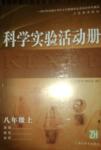题目内容
Scientists have found what look like caves on Mars, and say they could be protecting life from the planet’s terrible environment.
The first caves discovered beyond the Earth appear as seven mysterious black dots on the pictures sent back by NASA’s Mars Odyssey orbiter. Each as large as a football field, they may be openings into natural caves below the Martian surface.
“If there is life on Mars, there is a good chance you’d find it in caves,” said Jut Wynne, one of the researchers who noticed the features while working on a US Geological Survey Mars Cave Detection Program.
Jonathan Clarke, a geologist with the Mars Society of Australia, yesterday described the discovery as exciting.
One photo taken at night by an infrared imager(红外线成像器) showed one hole to be unusually warm, suggesting hot air trapped during the day is flowing out.
“I said: ‘Wow, that’s a cave’.” Dr. Clarke said excitedly. “People have been looking for these for a long time; now we have found them.”
He agreed such caves would be perfect places to hunt for life escaping from the bitterly cold, radiation-soaked(充满辐射的), dry surface.
“Tiny drops of water could collect inside,” he said. “If there are gases coming out, they could provide energy for a whole range of bacteria. A cave is also a protection from radiation; the surface of Mars is exposed to high levels of space radiation.”
The caves probably formed when tube-shaped lave flows(管状岩浆流) spread across the planet long ago. The outside of the tubes cooled, forming solid walls, while something hotter inside allowed the remaining have to flow out, forming caves.

1.What does the passage mainly talk about?
A. How the caves were formed on Mars.
B. How scientists found these caves on Mars.
C. Caves on Mars may be full of hot air or a sign of life.
D. Scientists have completely recognized the surface of Mars.
2.What can the “cave” be used for according to the scientists?
A. They can protect life from the planet’s terrible environment.
B. They can provide energy for people’s life.
C. They can be used to prevent space radiation
D. Both A and C.
3.We can learn from the passage that .
A. water has already been found on Mars
B. the scientists found all the caves at night
C. it is certain that there is life in these caves
D. the surface of Mars is bitterly cold, radiation-soaked and dry
4.According to the passage, Dr. Clarke was so excited because .
A. such caves could provide energy for life
B. they had finally found the caves on Mars
C. such caves would be perfect places to hunt for life
D. scientists had long been looking for these caves
5.Necessary conditions for life on Mars mentioned in the passage may include .
A. lave and energy
B. water and radiation from space
C. gases and lave
D. water and protection from radiation
1.C
2.D
3.D
4.B
5.D
【解析】
试题分析:科学家已经发现了火星上像洞穴一样的地方,这些洞穴可能有保护生命的作用,使它们在恶劣的环境中得以生存。火星表面不仅寒冷、干燥,而且充满了辐射。因此,科学家认为,如果火星上存在生命,那么它们很有可能存在于那些洞穴中。
1.Scientists have found what look like caves on Mars, and say they could be protecting life”和第三段“there is a good chance you’d find it in caves”与第六段“He agreed such caves would be perfect places to hunt for life”及第八段“The caves probably formed when”可知,文章主要讲的是火星上的洞穴可能存在生命迹象,故选C。
2.they could be protecting life from the planet’s terrible environment”和倒数第二段“A cave is also a protection from radiation”可知,科学家认为,火星上的洞穴可能有保护生命和预防辐射的作用,故选D。
3.such caves would be perfect places to hunt for life escaping from the bitterly cold, radiation-soaked(充满辐射的), dry surface”可知,火星表面非常寒冷、干燥,而且充满了辐射,故选D。
4.People have been looking for these for a long time; now we have found them.”可知,Dr. Clarke感到兴奋的原因是他们终于发现了一直在寻找的火星上的洞穴,故选B。
5.Tiny drops of water could collect inside...they could provide energy for a whole range of bacteria...A cave is also a protection from radiation”可知,水和不受辐射的影响是火星上存在生命的条件,故选D。
考点:科学类短文阅读

 科学实验活动册系列答案
科学实验活动册系列答案